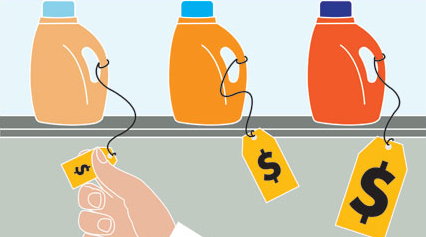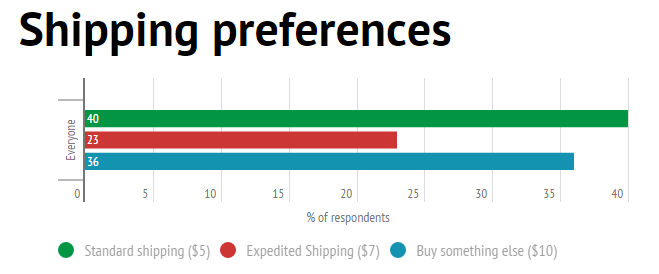Over the years, countless studies have been done on customer purchasing drivers and buyer behavior. While we haven’t boiled it down to a “science” quite yet, researchers have made good use of the scientific method and observed some insightful, actionable buyer behaviors that marketers should be aware of.
Interested? Here’s are 5 findings from the most up-to-date science in 2015:
1. Brain Activity Can ID A Buyer
According to a University of Florida study, brain activity can identify buyers. Specifically, brain activation may reveal people who are less certain about a product. These consumers are, perhaps counterintuitively, more likely to buy a product than consumers who have made up their minds either way.
In other words, if Charles dislikes Product A, Nancy likes Product A, and Gloria is uncertain how she feels about Product A, Gloria is the best target for advertising dollars. A sufficiently convincing ad will sway her towards impulsively buying Product A more than it would Nancy, whose mind is made up already. (I.e., Nancy likes Product A, but won’t buy it impulsively because of an advertisement).
This finding is actually very useful. Brands with large marketing budgets often feel the need to run advertisements for new as well as existing customers. According to this study (and David Ogilvy’s assertion decades ago), spending ad dollars on existing customers is largely a waste of money. (Unless it’s a holiday sale tie-in.)
2. We Compulsively Buy Things
Of course, this finding doesn’t only apply for advertisements. The truth is, customers compulsively buy things all the time — but by and large they tend to compulsively buy new products they haven’t tried before rather than ones they already use.
Then there’s compulsive buying disorder, which is only partially understood — psychologists still have a ways to go before they fully diagnose its causes. But it is just as much a disorder as it is a therapy. Compulsive buyers are understood to have a “disorder” if too much money is on the line, but compulsive buying itself is actually a stress reliever (which may explain why so many consumers engage in it).
Compulsive buyers usually fixate on a narrow range of item types (e.g., food, shoes, video games, etc.), but are motivated to impulsively buy new brands they haven’t tried before to diversify the experience. Another point for advertisers that target new customers.
3. We Don’t Like Paying Extra for Things
Ishani Benerji, the Research Director of the Georgetown Institute for Consumer Research, ran a very interesting and insightful study on how consumers spend money online. Specifically, her study gave participants 3 options for shipping:
Standard shipping, which took 5-7 business days, cost $5 for any product. Expedited shipping cost $7, but delivery would be in 2 business day. Finally, opting to buy something else “they weren’t particularly excited about” for $10 (and qualifying for expedited 2-day shipping) was option 3.
Regardless of age or gender, participants preferred standard shipping the most, and opted to pay another $10 (and gain an item they didn’t really need) rather than pay another $2 for faster shipping only. The takeaway is that although we live in a culture of instant gratification, we don’t like to spend money unnecessarily. Consumers like to pay for purchases, not for perks.
4. We Value Brands More Than Products
Perhaps the most compelling research finding is one that we already intuitively know. Consumers by and large prefer purchasing from a positive, attractive brand rather than from a no-name or generic brand (regardless of cost).
The best way to understand the importance of brand is to visualize an aisle in a grocery store (picture above). Faced with 20 different varieties of the same product (beans), how does an informed shopper decide? Do they choose based on price? Or do they choose a brand they’ve already heard of?
The answer is that they actually purchase based on both. But the two are usually mutually exclusive.
For example, if Susan purchases Brand A ($5) over Brand B ($2.50), it’s because she’s heard of Brand A and trusts its reputation. But if she decides on a day she feels like saving money to buy Brand B, it’s because of price and price alone.
In other words, Brand B will never be bought because of its brand — customers will label it the “cheap” alternative, and may never see it as a desirable brand. But, on the flip side, customers will never see “Brand A” as the most affordable brand, and will choose not to buy it when certain emotion-based decision-making come into play.
The Science of Buyer Behavior
One idea that kept coming back to me as I read these studies is that it’s so hard for humans, even qualified researchers, to properly track and account for human impulsive decision-making. Buyer behavior is very opaque, and only becomes transparent once the available data is crunched.
That’s why automated marketing solutions like marketing automation are so valuable to modern marketers. With more touchpoints, channels, and consumers than ever before, the only way a brand can keep up with the competition and properly tune into buyer behavior is by automating the data-crunching process.
Let’s leave the strategy generated by actionable insights to the stakeholders and decision-makers. But let’s get our actionable insights as quickly and efficiently as we can using automated solutions.












